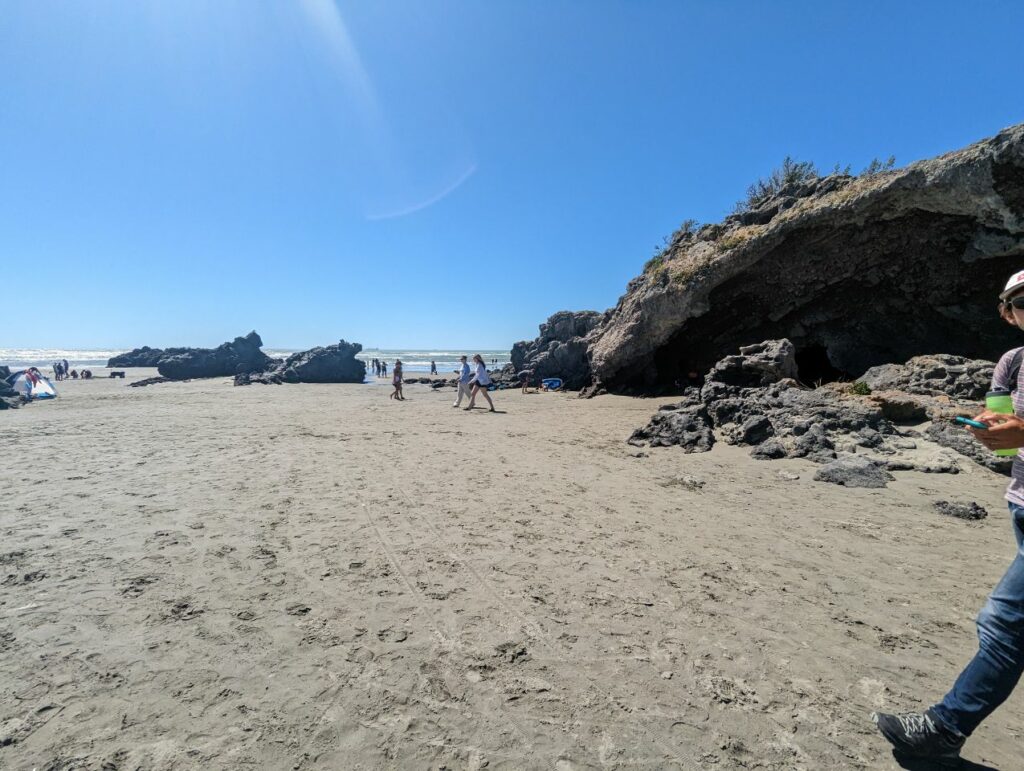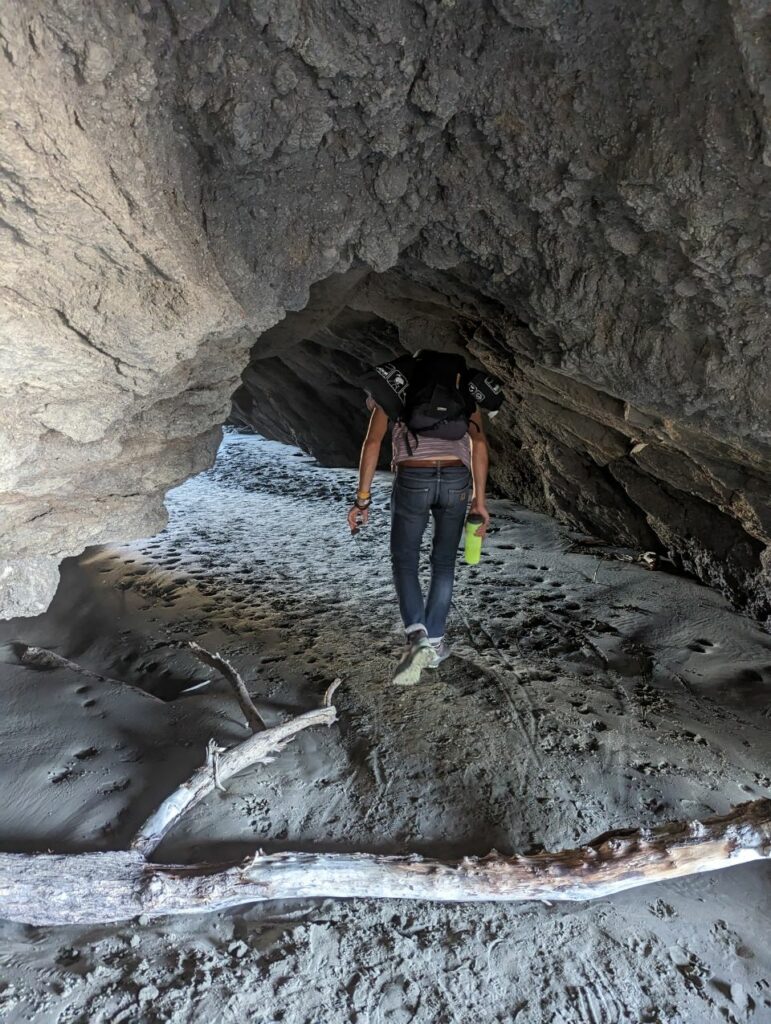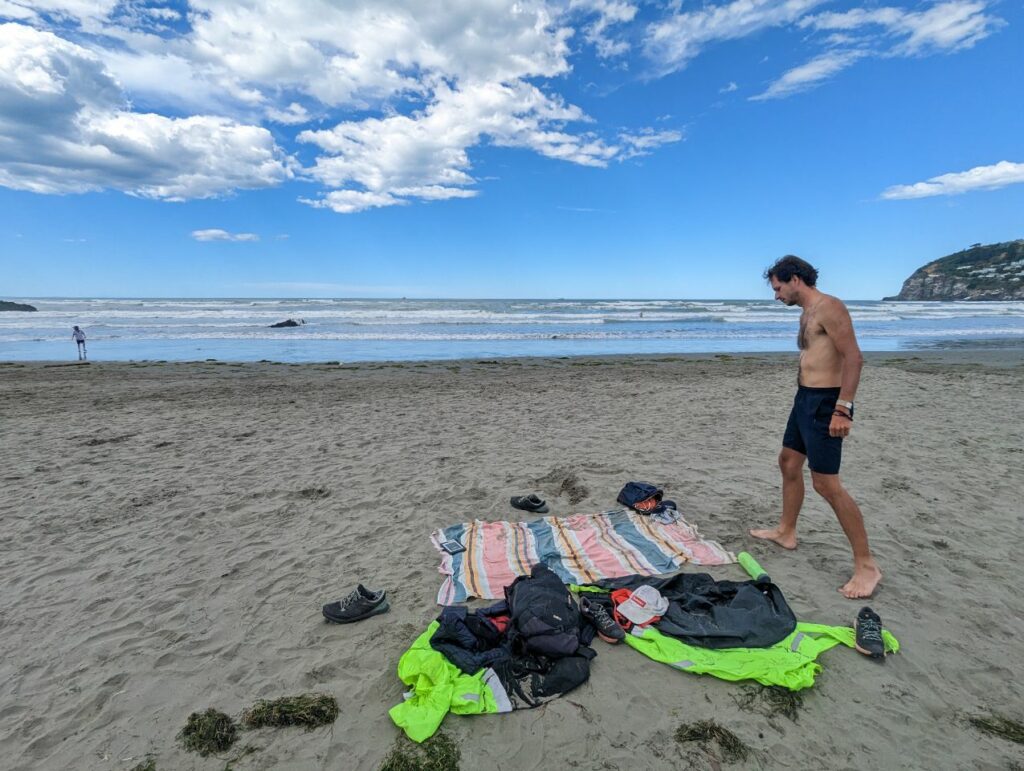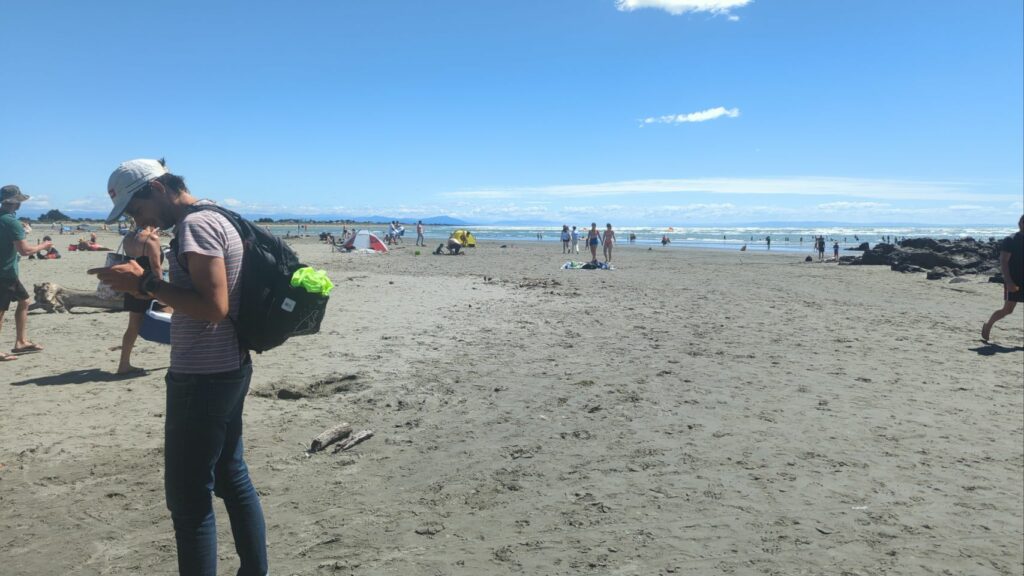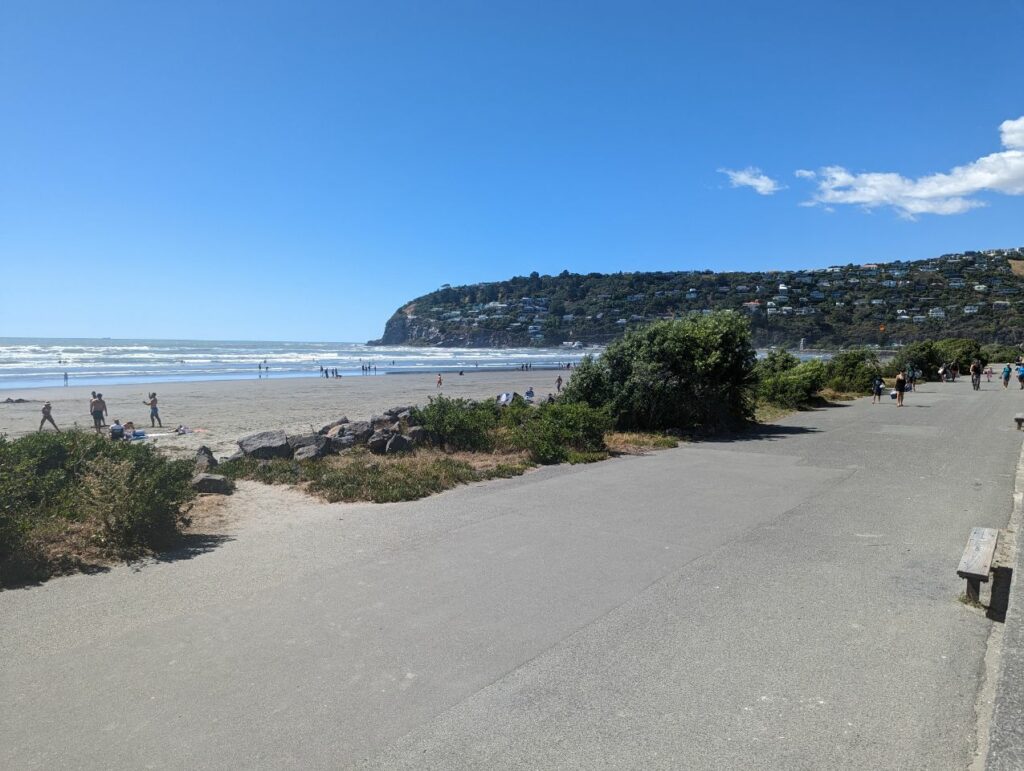
SUMNER BEACH
6 FEBRUARY 2023
Journée plage !!! Grasse matinée pour une fois puis direction la plage Petite pause au café avant de se dorer la pilule au soleil Glace dans l’après-midi et le soir au rejoint Diana, notre Airbnb des premiers jours pour manger un bout avec elle
Sumner is a coastal seaside suburb of Christchurch, New Zealand and was surveyed and named in 1849 in honour of John Bird Sumner, the then newly appointed Archbishop of Canterbury and president of the Canterbury Association. Originally a separate borough, it was amalgamated with the city of Christchurch as communications improved and the economies of scale made small town boroughs uneconomic to operate.
History[edit]
Sumner was surveyed in 1849 by Edward Jollie[citation needed] for Captain Joseph Thomas, the advanced agent of the Canterbury Association.[citation needed] Jollie’s November 1849 map showed 527 sections and numerous reserved and provisions for churches, schools, cemeteries, town hall, emigration barracks and other town amenities. However, his plans were abandoned through lack of funds and a new survey on which Sumner is based was carried out in 1860.[citation needed]
The first European to carry out work in Sumner is believed to be Charles Crawford, a whaleboat owner, who transported materials from Port Cooper, now Lyttelton, under contract to build the headquarters and storeroom for Captain Thomas.[citation needed] Sumner was settled in late 1849 or early 1850 by work crews building the road to Lyttelton,[citation needed] Sumner is thus one of the oldest European settlements in the Christchurch area.[improper synthesis?][citation needed] The Day family was the first to settle permanently in Sumner[citation needed] followed by Edward Dobson and his family.[citation needed]
Sumner had its first shop early in 1870, and its proprietor, S.E. Horneman, was postmaster from 1873 until 1876.[citation needed]
In 1872, it came under the control of the Heathcote Road District.[citation needed] When provincial councils were disestablished in 1876 and replaced with counties, Sumner had a second parent body, the Selwyn County added to the continuing road board.[6]: 17 In 1883, Sumner was constituted as a town district and was run by a board of five elected commissioners.[6]: 19 The board elected its own chairmen, and the two people who filled that role were C. L. Wiggins (March 1883 – September 1884) and J. M. Wheeler (September 1884 – June 1891).[6]: 20 On 1 June 1891, Sumner was proclaimed a borough.[6]: 30 Mayoral elections were held on 27 June, and the last chairman was elected the first Mayor of Sumner.[6]: 30–31
In 1885 the Harbour Board granted the concession to build a bath at the East end of Sumner beach. S.L. Bell enclosed some of the sea, built dressing sheds and a tea shop.[citation needed] The bathing pool was a great attraction but every year terrific storms would batter the bath and gradually dump fine sand. Eventually a flood filled the bath with clay and silt from the hills causing its closure.[citation needed]
In 1912 Sumner established its own gasworks and electricity was connected in 1918.[8] The Anglican evangelical leader William Orange was vicar of Sumner from 1930–1945.[9]
On 22 February 2011, Sumner was hit by the Christchurch earthquake, which destroyed or made uninhabitable a large number of the local houses and commercial buildings.[10] On 13 June the same year, Sumner was hit by another earthquake of almost the same magnitude as the February event.[11] These two earthquakes caused many of Sumner’s iconic cliffs to collapse, and many areas to be cordoned off with both traditional fences and shipping containers.[10]




